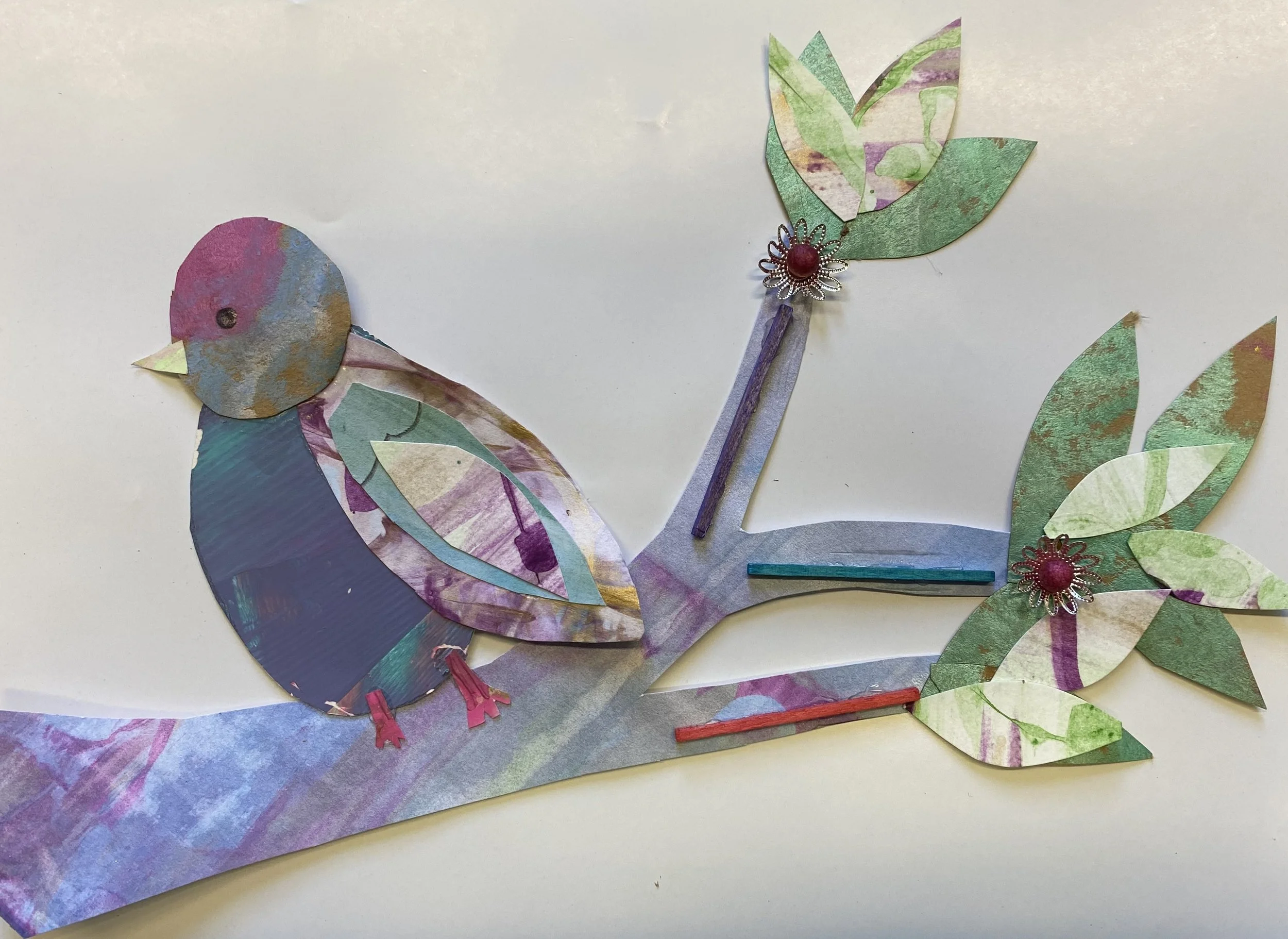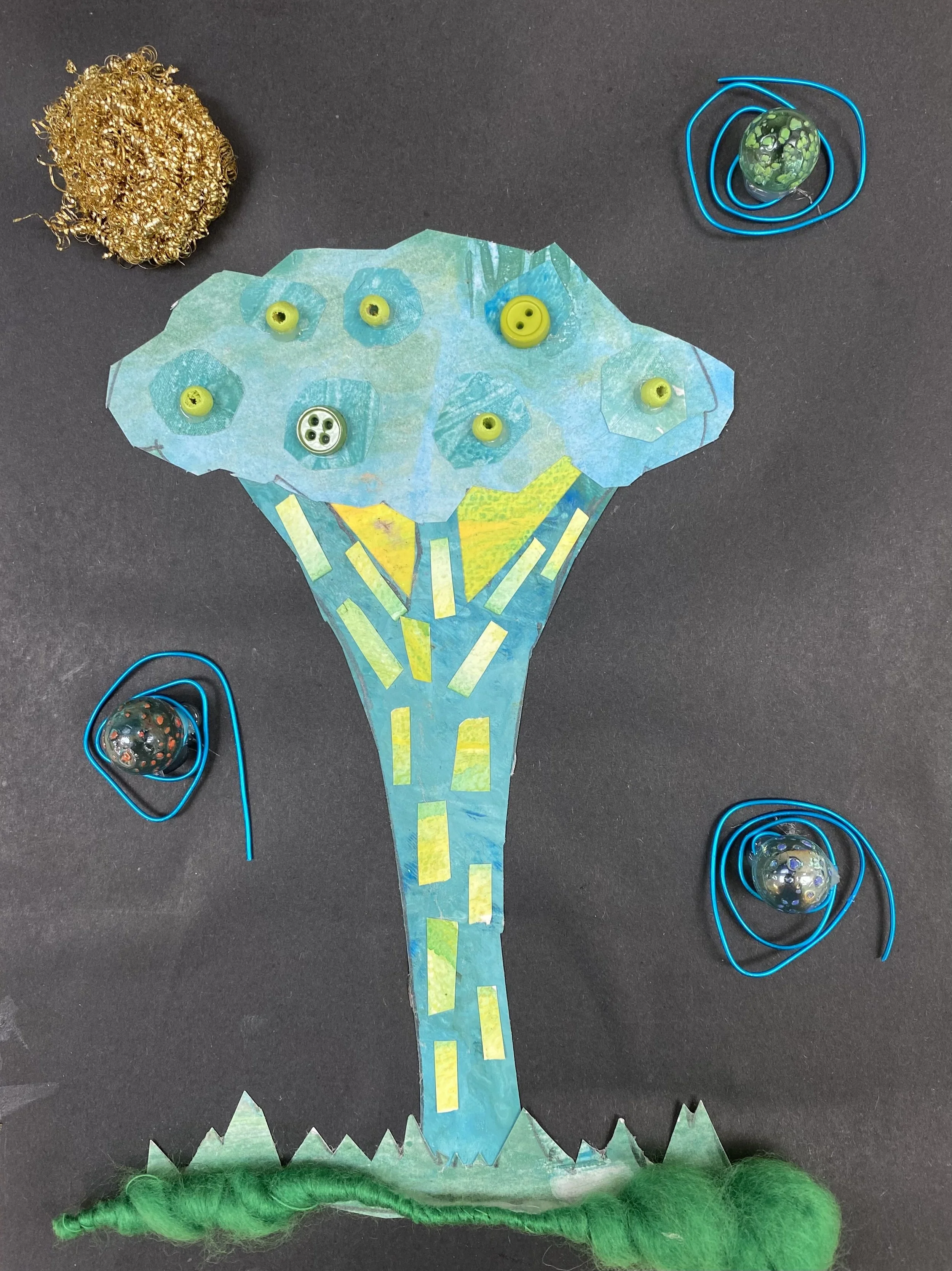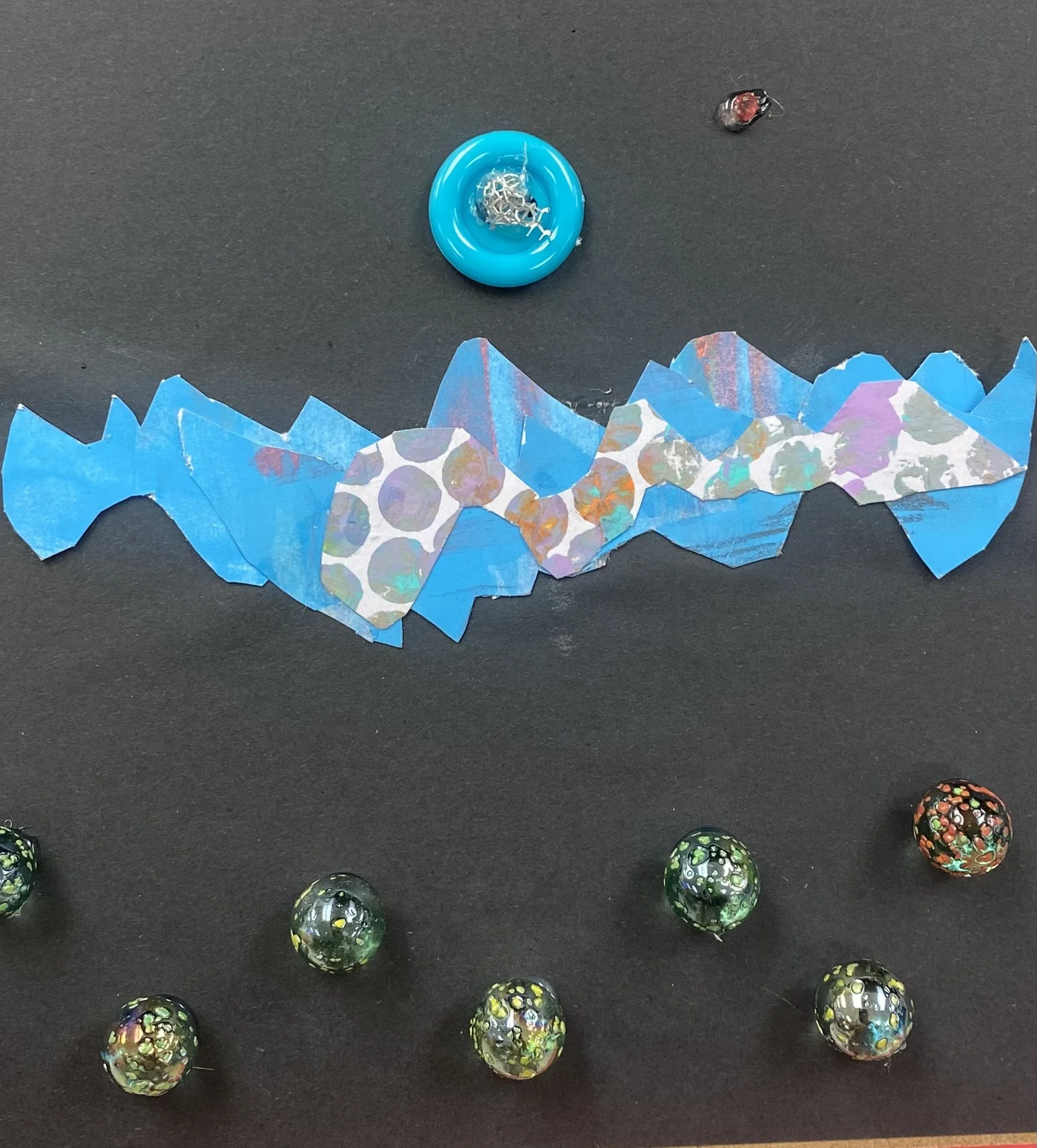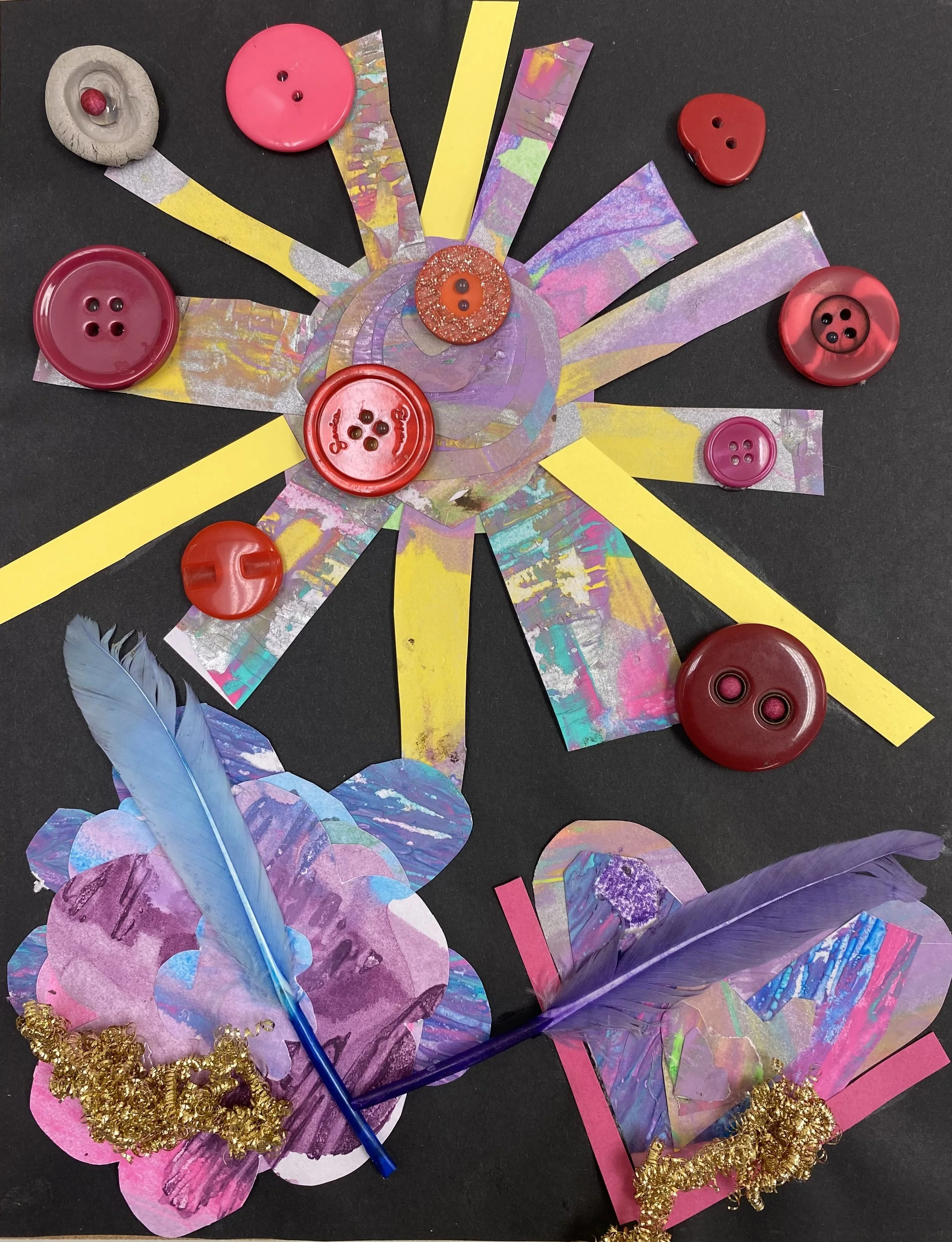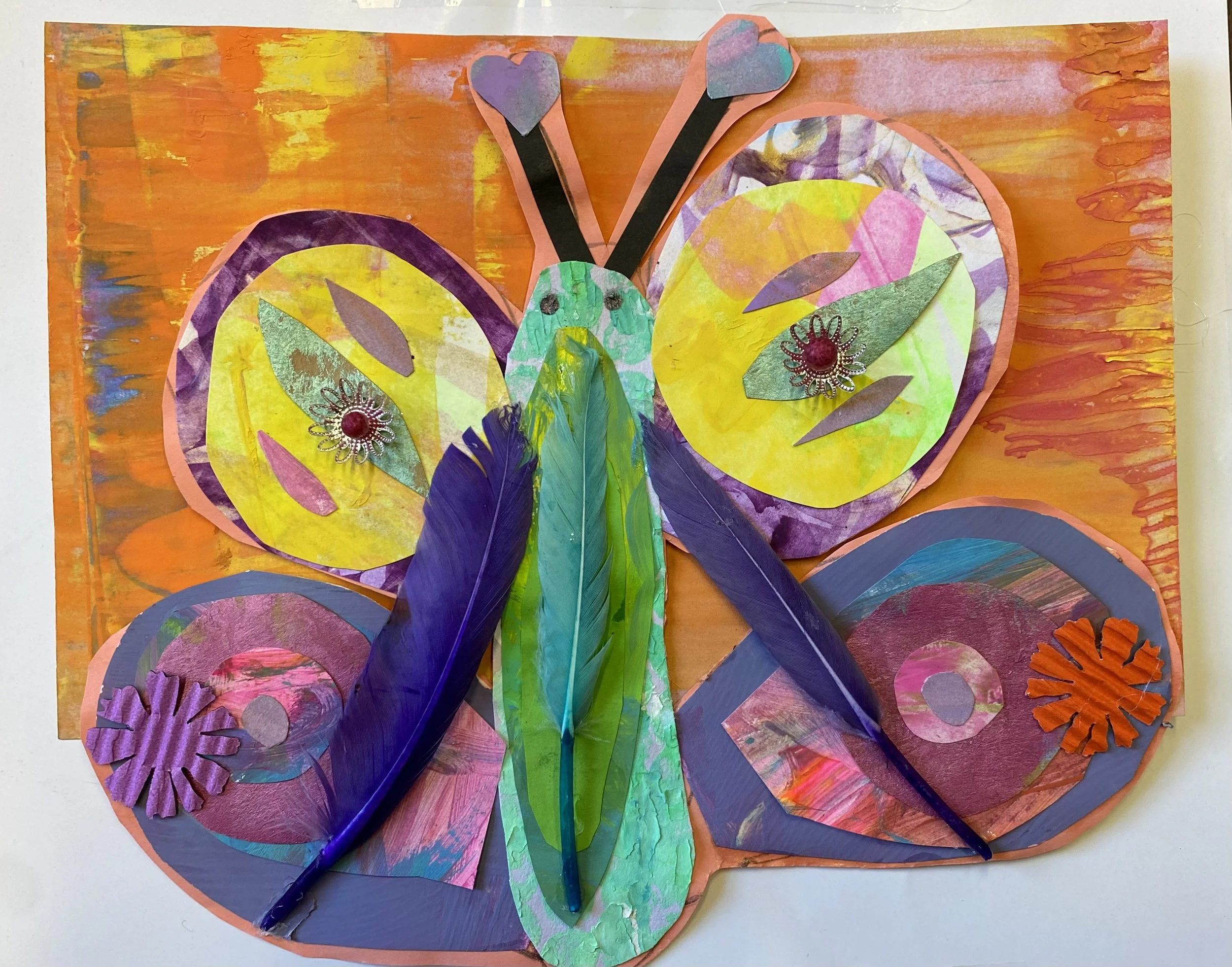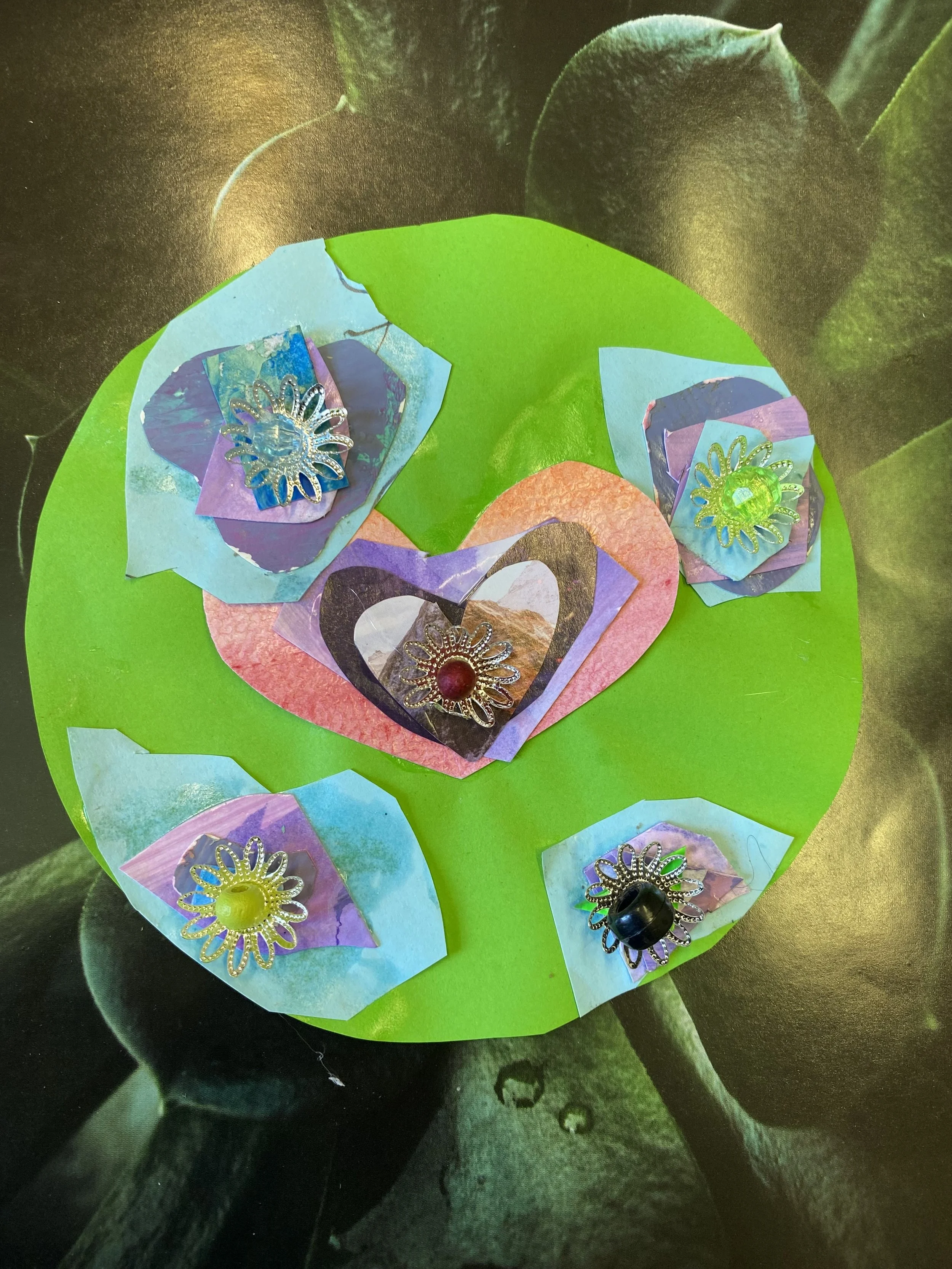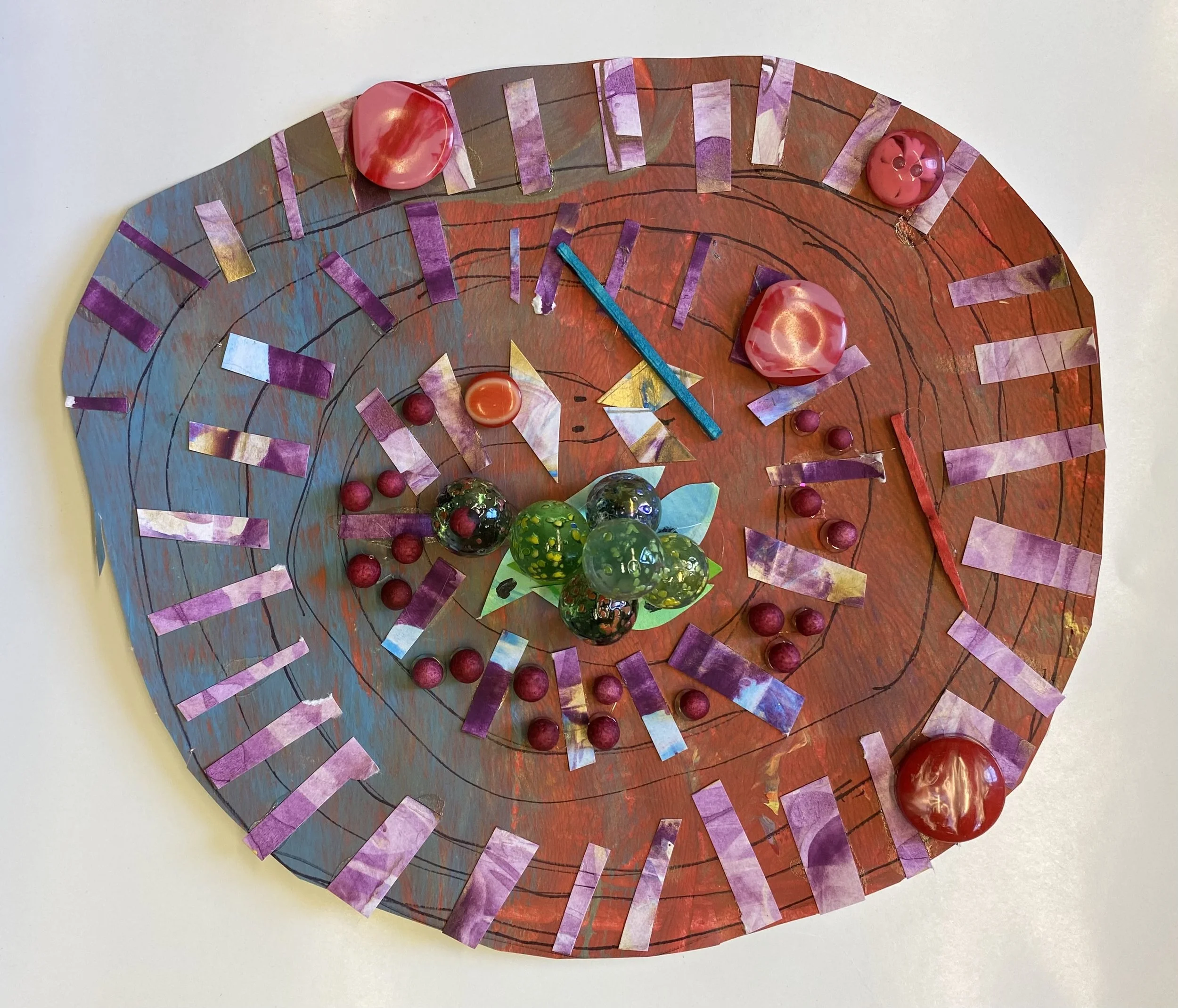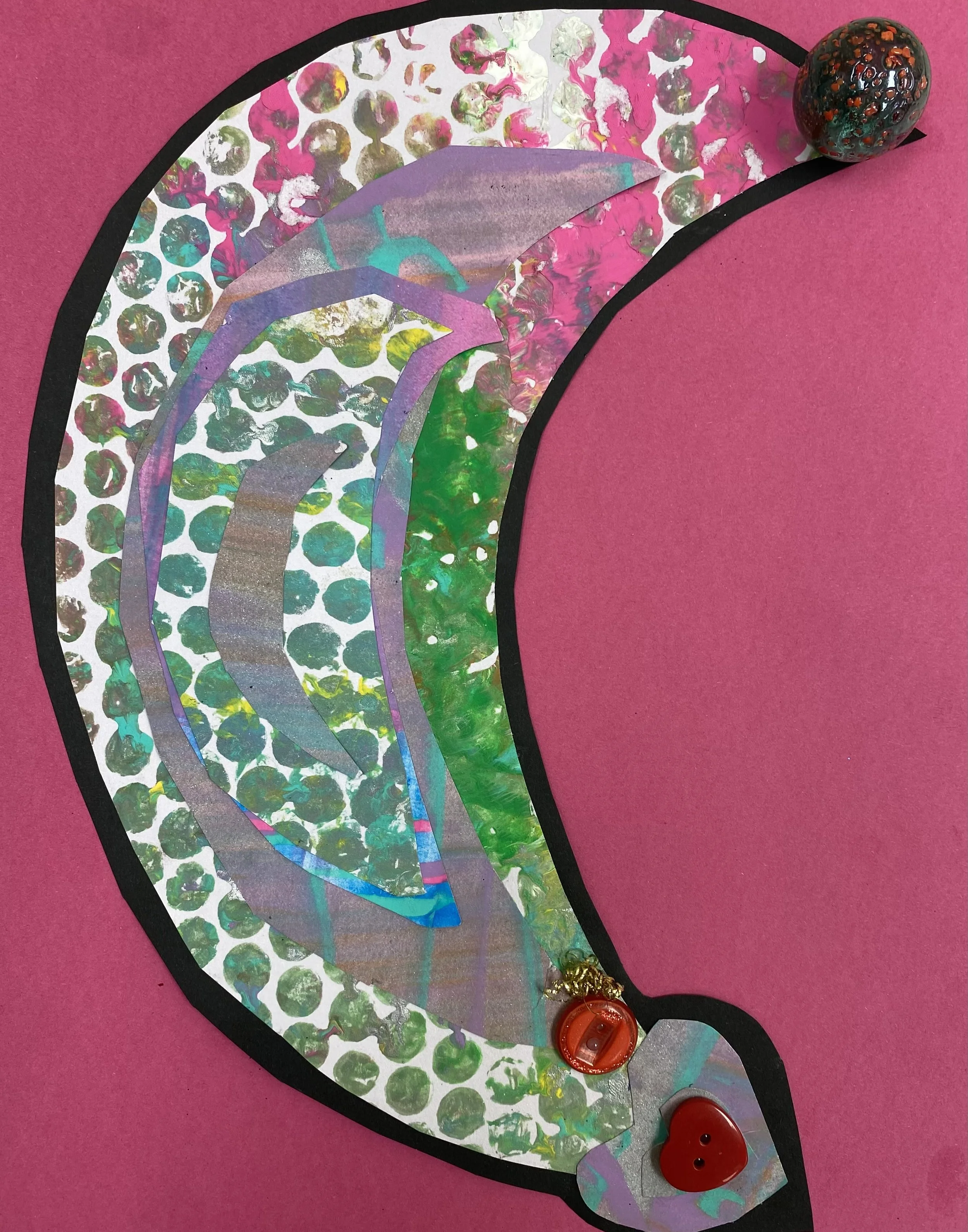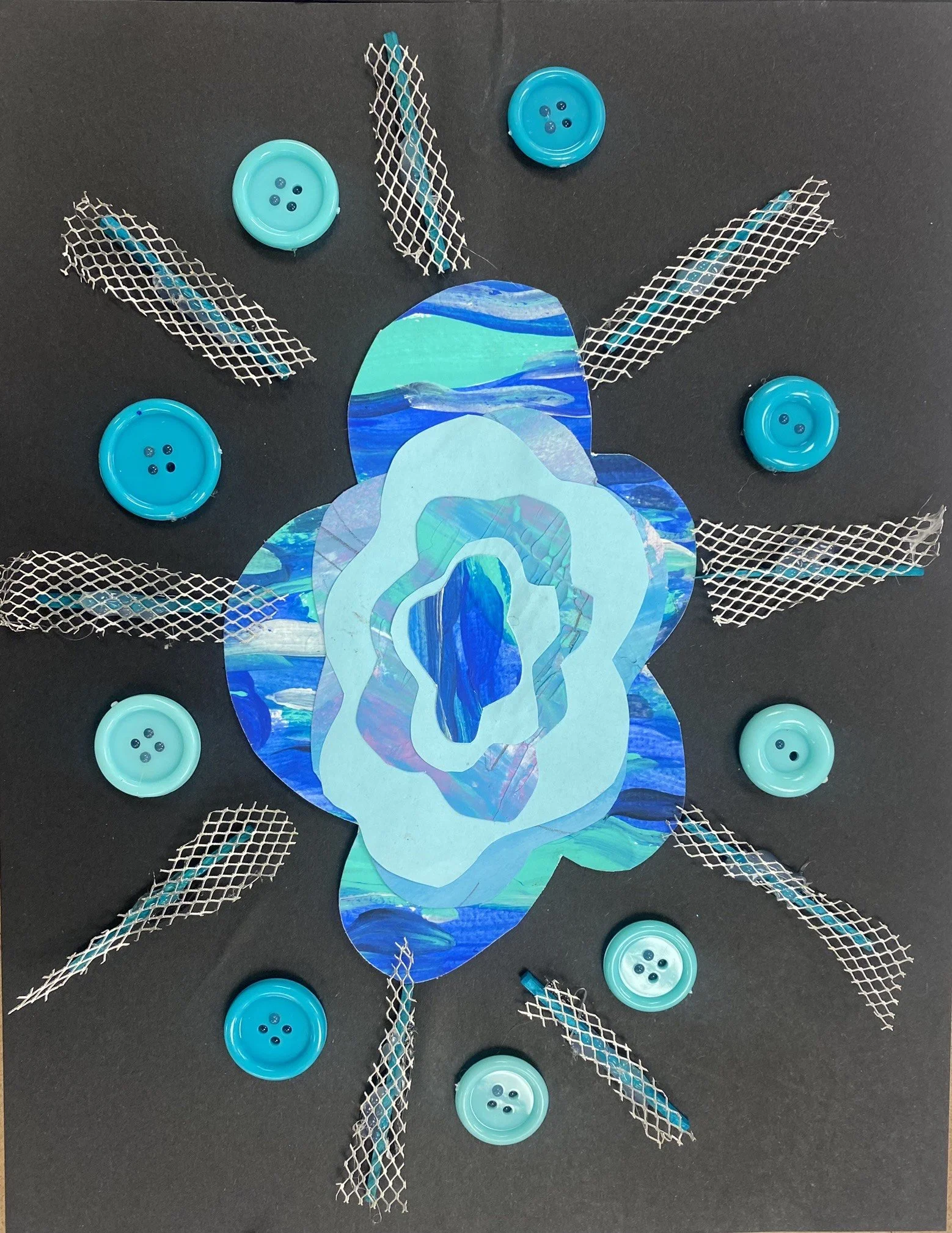Unlocking the Secret Language of Art: Symbolism
Grade Level: Grades 4-6
Subject Area: Visual Arts
Duration: Half-day workshop (3 hours)
Have you ever wondered about the hidden meanings behind the art you admire? Symbols in art are like secret codes, revealing special stories and deep emotions. From animals to objects, these symbols hold more than meets the eye. Artists use symbols to weave secret messages into their art, inviting us to unravel the mysteries within. These symbols carry profound significance for the artists, like a secret language with layers of understanding.
Symbols add depth and excitement to art, evoking various emotions and prompting contemplation of profound concepts. They are the special tools artists use to infuse their work with deeper meaning, inviting us to decipher their hidden language. In simple words, symbols and symbolism in art are like hidden messages that make art more fun and interesting to explore.
In this class we discussed the concept of symbolism in art. Students brainstormed different symbols we see day to day and chose one meaningful to them. The result, as you can admire, were spectacular.
Curriculum Expectations:
Identify and interpret symbols in art and discuss their meanings
Create original artwork incorporating symbols to communicate ideas and emotions
Analyze how symbols can add depth and meaning to artwork
Explore the concept of collage and create their own artwork using various materials and techniques
Materials:
Drawing paper
Pencils and eraser
A variety of coloured pencils, markers, acrylic pens, woody’s, watercolour pens, oil and chalk pastels
Collage materials (metal, various papers, buttons, threads, textile elements, different types of cardboard, beads, sticks, etc.)
Glue or adhesive
Scissors
Examples of artworks featuring symbolism
Chart paper and markers for brainstorming
Workshop Plan
Introduction:
Begin the workshop by discussing the concept of symbolism in art, using the provided introduction about the secret language of art and the significance of symbols (see below).
Show examples of artworks featuring symbolism and ask students to identify any symbols they recognize or find intriguing.
Engage students in a discussion about the function and purpose of symbols in art, using the provided examples of symbolism in art.
Encourage students to consider how symbols can convey hidden messages, special meanings and make art more interesting.
Have students create various symbols on drawing paper utilizing the variety of mixed media drawing and painting tools provided.
Brainstorming Symbols:
After students have had time to create rough examples of different symbols lead a brainstorming session where students share some of the symbols they made. Discuss symbols that are meaningful to them personally or that they have encountered in their environment.
Record the symbols on chart paper and discuss their potential meanings and interpretations.
Creating Symbolic Collage Art:
Provide students with a variety of collage materials such as metal, various papers, buttons, threads, textile elements, different types of cardboard, beads, sticks, etc.
Instruct students to choose one symbol from the brainstorming session or from their own rough brainstorming examples to create using the collage materials.
Demonstrate different techniques for manipulating and attaching the materials, such as cutting, tearing, layering and gluing.
Encourage students to experiment with textures, colours and compositions to inhale the symbolism in their artwork.
Provide guidance and support as students work on their symbolic collage art, emphasizing the use of symbols to communicate ideas and emotions.
Once symbols have been created mount onto specialized black drawing paper.
Reflection and Sharing:
Have students reflect on their final artwork and share their interpretations of the symbols they created.
Encourage students to discuss how the use of symbols and collage materials has added depth and meaning to their artwork.
Facilitate a class discussion on the different techniques and materials used by the students and how they contribute to the overall symbolism of the artwork.
Conclusion:
Wrap up the workshop by highlighting the key takeaways from exploring symbolism in art and creating symbolic collar artwork.
Encourage students to continue exploring the use of symbols in their artwork and to think critically about the symbolism they encounter in the world around them especially in the media.
Allow students to share their ideas and insights, promoting a collaborative and interdisciplinary learning environment.
Assessment:
Observe student’s active participation and engagement throughout the workshop.
Assess students’ ability to identify and interpret symbols in art and discuss their meanings.
Evaluate students’ use of symbols and collage materials to communication ideas and emotions in their original artwork.
Extensions for Teaches-
Cross-Curricular Connections:
Discuss potential cross-curricular connections, such as writing a short story or poem incorporating the symbols, exploring cultural symbols in social students or investigating historical artworks and their use of symbolism.
Encourage students to consider the role of symbols in communication and media, fostering critical thinking skills.
Note: This half-day workshop plan is designed to align with the Ontario Ministry of Education’s curriculum guidelines for Grade 4-6 Visual Arts, focusing on the exploration of symbols in art, their interpretation and their incorporation into original artwork. The inclusion of collage materials allows for a hands-on and tactile experience, enhancing students’ creativity and their artistic expression. The cross-curricular connections aim to foster interdisciplinary learning and critical thinking skills.
Secret Language of Art and the Significance of Symbols
Have you ever wondered about the hidden meanings behind the art you admire?
In art, “symbols” are like secret codes that artists use to tell special stories or share important feelings in their artwork. These symbols can be things like animals, objects or even special hand signs that mean something more than just what they look like.
Artists throughout history have used symbols to weave recreate messages into their art, inviting us to unravel the mysteries within. These symbols carry profound significance for the artists, like a secret language with layers of understanding.
Symbols add depth and excitement to art, evoking various emotions and prompting contemplation of profound concepts. They are the special tools artists use to infuse their work with deeper meaning, inviting us to decipher their hidden language.
Examples of Symbolism in Art:
Hidden Messages - Artists use symbols to hide secret messages in their art. It’s like a fun puzzle to figure out what the artist is trying to say.
Special Meanings - Sometimes, artists use symbols to show things that are very important to them. It’s like having a secret language that only some people understand.
Making Art More Interesting - Symbols make art more exciting and interesting. They help us feel different emotions and think about big idea when we look at art.
Special Tools - Symbols in art are like special tools that artists use. They help artists share their feelings and ideas in a way that’s like a secret code for people to figure out.
In simple words, symbols and symbolism in art are like hidden messages that make art more fun and interesting to look at and think about.
All art classes and workshops can be altered to meet any grade level or expectation.
